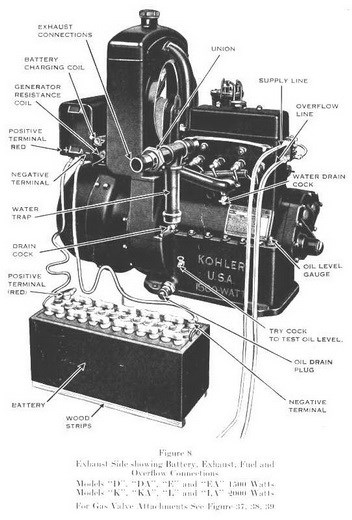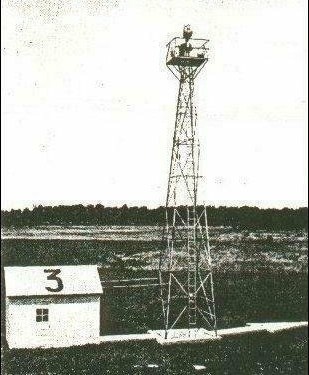BEACON 20 CONCRETE ARROW & GENERATOR SITE

Three years after discovering the site of Airway beacon 20, I learned that there was a concrete arrow nearby. From conversations I had with an aviation archeologist, I knew that the concrete arrows were only erected as part of the "original" lighted airway. I assumed that the site I had previously found had to be a later relocation. However, after exploring both these sites, I have come to the realization that both were part of the original airway.
At sites where commercial power was not readily available, beacons were powered by two Kohler model D-40 gasoline generators, one used as a standby. Gasoline for the generators was supplied by two 515USg fuel tanks. At night, with the aid of an astronomical clock—or a photo-electric cell during inclement weather—a generator would start to crank. If it failed to come on line, the other would automatically crank and the process would repeat itself until one ran. Thermostats would automatically shut down the generator if it became too hot. During periods of cold or freezing temperatures, the generators would automatically start at intervals throughout the day to keep the oil warm.
 Kohler Model D-40 Generator
Kohler Model D-40 Generator
The arrow at this site is different from any of the others I've visited thus far along the route - they typically consist of a concrete pad at the "feather" end of the arrow, which supported an equipment or generator shed, and the 51 foot tall beacon tower was situated on a second pad located at the center of the arrow. This site, however, has only the pad at the tail, and the concrete arrow is considerably shorter. Along with the two small concrete pedestals that supported the generators, it is obvious this was a "generator only" site.
 The "typical" beacon installation
The "typical" beacon installation
Another interesting thing I noticed here is how the Commerce Department ran the power from the generators to the beacon. Either as a cost saving measure or because of the steep, rocky terrain, power poles were not installed to run the wiring up to the beacon. Instead, armored cables were laid directly on the ground. The three cables (one for each generator, and a spare) can still be seen running northeast from the old foundation.
While you're up there, take the time to wander around and explore the area...you'll see plenty of evidence of the activities that took place here some 80 years ago. Please don't CITO anything that may have been associated with the generator operation. Their age and relevance to the site make them "artifacts", not trash.